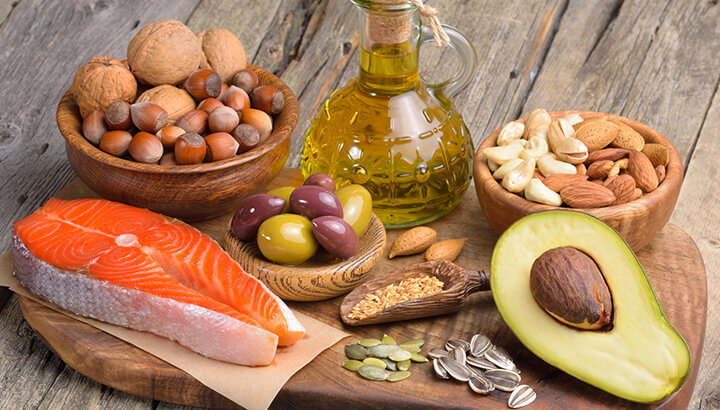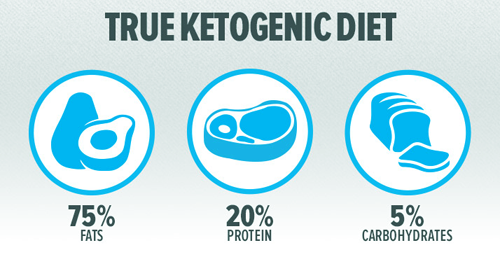Social media posts about pissing on Keto Sticks, mainlining exogenous ketones, and dropping an #experimentaldiet hashtag everywhere have been taking the internet by storm of late.
Which can only mean one thing…ketogenic dieting has taken up the mantle of being today’s current nutritional trend, and is rising to the occasion.
In the weird and whacky world of training and nutrition, there’s always gotta be something hot, right?
In my experience, however, the results from subscribing to a ketogenic diet are wildly unpredictable from person-to-person, and that’s if you’re doing it the right way. Which from what I’ve seen, is a gargantuan “if.”
There’re two “ways” for setting up a ketogenic diet; the right way, and the wrong way.
When heading down the ketogenic path, most will follow a low-to-no carb, moderate-high protein, high fat intake.
This is not a true ketogenic diet — rather, it’s a simply a standard low carb diet.
The delineating factor between right and wrong when it comes to Keto lies in your protein intake, which must also be kept quite low (especially by our meathead standards and expectations for having 30-50 grams of protein with each meal.

You’d be hard pressed to call keto a starvation diet.
Real quick, here’re some of the finer points on “going Keto.”
Under normal circumstances, your body relies upon a mixture of protein, carbs, and fats for fuel, the preference of which depends on your dietary choices, and thus what you make available to your body.
The presence of carbohydrates in your diet will give glycogen the nod as your primary fuel source. Now, when glycogen stores become depleted, your body must look for alternative fuel sources in order to continue functioning. This is where Free Fatty Acid (FAAs) utilization comes into play, as much of your bodily tissues, systems, and organs can tap into FFAs for fuel, with your brain and nervous system being the exception FAAs. While your brain and nervous systems may not be able to tap into your FAAs, they can however take advantage of ketone bodies for fuel.
Which begs the question…
What the bloody hell are ketone bodies?
Ketone bodies are the energy source produced by your body when it slips into a ketogenic state. Of course, to keep you on your toes, there are three different types of ketone bodies.
Ketone body #1. Acetoacetate (AcAc).
AcAc is produced as a result of incomplete FFA breakdown in the liver.
Ketone body #2. Beta-Hydroxybutyrate (BHB).
BHB is also produced as a result of incomplete FFA breakdown in the liver.
Ketone body #3. Acetone.
Acetone’s primary function is to replace glucose as a fat-derived fuel for the brain, as well as to signal a decrease of glucose production in the liver. Acetone can also be used as a fuel source for most other tissues in the body.
Cool. Great, but what then is ketosis?
Ketosis is the state that occurs when your dietary choices shift your body from a operating with a glucose-based metabolism, to a fat-based metabolism.
Within the context of being in a ketogenic state, there are three different “types.”
- Fasted — this is referred to as starvation ketosis
- When subscribing to a high-fat (low-protein, low-carb) diet — which induces dietary ketosis
- Immediately after you train — post-exercise ketosis
The three different ketogenic states are a result of the same two factors:
- Insulin levels must be low, and there needs to be an increase in glucagon (both of which are dependent on liver glycogen being depleted).
- An increase in FAA availability to the liver, which comes from a higher intake of dietary fat, or release of stored body fat.
At the end of the day, when your body moves into ketosis, it indicates that fat breakdown has been activated.
Nobody effectively uses a Ketogenic diet as an optimal diet for achieving muscle growth.
Which, when you boil it down, means that following a ketogenic diet is really a means of controlling your calorie intake, and putting yourself into a deficit.
To break this down one more step, when you maintain a caloric deficit on your quest for becoming shredded, your body has three viable options for fuel sources:
Fuel source #1. Protein, which can be converted into glucose by the liver, and used for fuel (this should get your wheels spinning as to why a proper ketogenic diet calls for a low protein intake).
Fuel source #2. Carbohydrates, which are stored as glycogen in muscle tissue and your liver.
Fuel source #3. Fats, which are primarily stored as body fat.
As we touched on above, it’s only when your body is in a fasted or ketogenic state do ketones come into play as a viable fuel source.

None of which are scenarios that lend themselves to optimal muscle growth, even more so when you consider that:
- Building muscle calls for moderate-high protein intake.
- A surplus (to some degree) of calories.
To that end, if your end game or current goal is to get as jacked as you possibly can (…that’s gonna take a while), and become strong like bull, a ketogenic diet is not going to be an optimal approach for you.
But…
As a means for achieving fat loss, a ketogenic diet has wheels (but it’s not a panacea).
Speaking strictly from a personal standpoint, I’m not a fan of ketogenic dieting for fat loss for a few reasons:
- I quite like carbohydrates, and would rather eat less than none whatsoever.
- With no available glucose stores on hand, high volume training sessions in a ketogenic state are no fun — and I like my training sessions to be fun.
But, saying that doesn’t make Keto any less effective as a means for fat loss, provided you keep the following in mind:
1. Ensure that you’re in a calorie deficit. This means that before you do anything, you must do the math to determine your caloric starting point. Because, ketogenic diets are not magic in that simply being in ketosis will trigger fat loss. If you’re eating too much, you’re eating too much.
2. Many will say that ketogenic diets are a “high-fat” diet, but this isn’t inherently true. Rather, since ketosis comes from a state of heavy carbohydrate restriction, it’s more accurate to refer to it as a “low-carb” diet.
To this end, a “safe bet” for laying out your macronutrients to get your body into a ketogenic state looks like so:
Protein: 15-25% of total calories.
While it’s imperative that you do restrict your protein intake to some degree, you may be best-served by keeping it “normal” for the first two weeks or so, as your body will still be searching for glucose as a fuel source while it adjusts to the absence of carbs. As you adapt, bring your protein intake down.
Carbohydrates: To maintain a ketogenic state, you want to keep carbs under 5% of your total calories. The lower you can keep them, the “deeper” into ketosis you’ll go.
Fats: 70-80% of total calories.
In no context is a ketogenic diet a starvation diet. You still need calories for your body to function, and there needs to be a fuel source somewhere. As mentioned earlier, ketogenic diets are simply an effective, low-carb route to achieving fat loss, while shifting your body’s preferential fuel source from glucose to ketone bodies.

Stay within these parameters, with a little freedom to adjust fats and protein, and you’ll be good to go.
Something, something, something, Ketogenic diet.
To truly dive into the Ketogenic diet would require multiple essays and articles covering everything from what an optimal training set-up for keto looks like, to how to know when you’re in ketosis, to potential side effects of ketosis (it’s not for everyone), right down to the nitty-gritty science of what’s happening in your body.
All of which goes well beyond the scope of this article — which was intended simply to give you clarity on what a ketogenic diet is, an understanding of ketosis itself, the basal mechanisms at play, and a broad overview of what ketogenic diets look like in terms of protein, carbohydrate, and fat intake.
If you’ve been curious about Keto, this is enough to get the ball rolling.
“But, I want to know more. What does an optimal training program look like? How do I make dietary adjustments? Are there any other benefits? What do “keto meals” look like?
If you’ve got any of the above questions, I’ll answer them. But, only if you let me know in the comments below.
About the Author
 Alex is a short shorts enthusiast, espresso fiend, and an unapologetic meathead. When he's not training legs or getting his clients jacked, shredded, and tanned, he can be found exploring how to write more better, perfect his risotto recipe, or pull the perfect shot of espresso. Alex has polled 19 of the top muscle building minds for their best training tips, and gathered them into one convenient guide. Click through here to grab your copy of the prestigious Hypertrophy Handbook (it's free).
Alex is a short shorts enthusiast, espresso fiend, and an unapologetic meathead. When he's not training legs or getting his clients jacked, shredded, and tanned, he can be found exploring how to write more better, perfect his risotto recipe, or pull the perfect shot of espresso. Alex has polled 19 of the top muscle building minds for their best training tips, and gathered them into one convenient guide. Click through here to grab your copy of the prestigious Hypertrophy Handbook (it's free).


